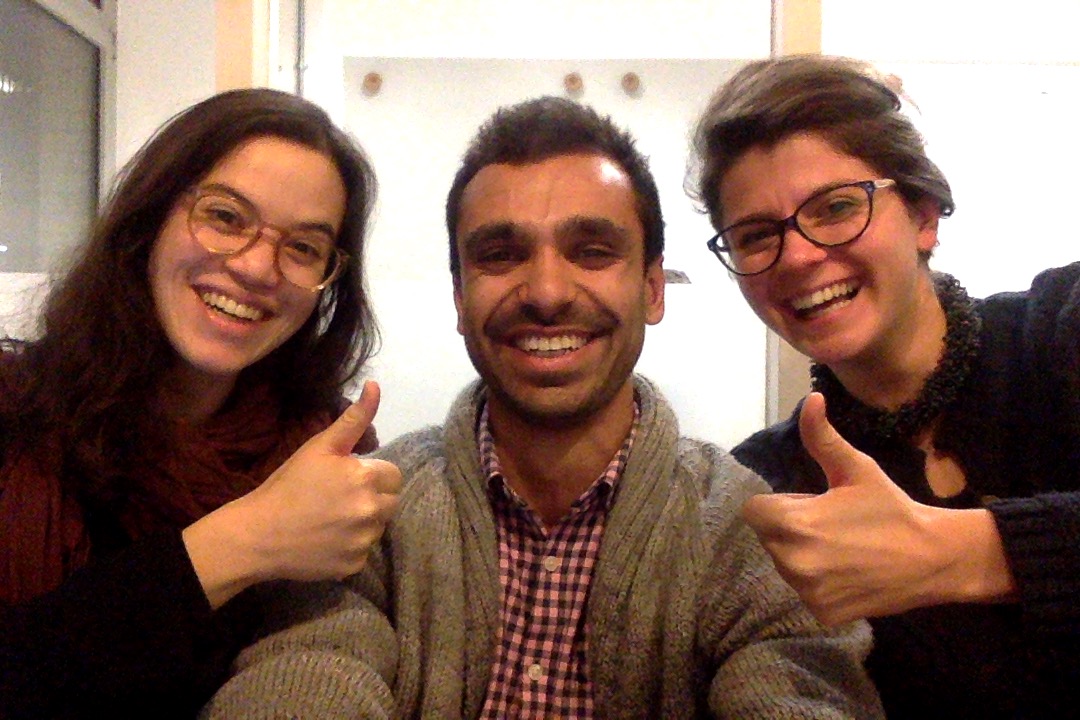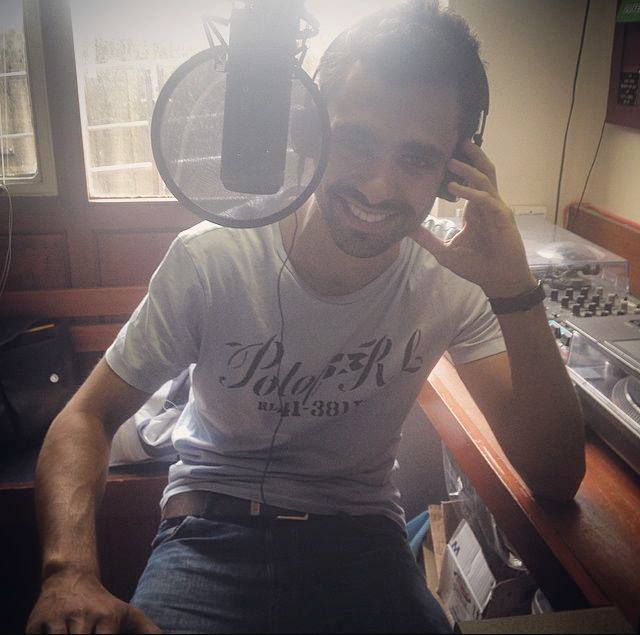We helped the Humanitarian Innovation Fund translate research into actionable next steps for the humanitarian sector.
Research often leads to piles of information that are hard to act on. If you write this information up without synthesising and communicating it effectively, you will end up with an ineffective report. Because of this, we focus intensively on synthesis and communication in all of our work.
We recently did this kind of synthesis work for Elrha’s Humanitarian Innovation Fund (HIF). They support organisations developing innovations in humanitarian assistance and they’ve noticed that it's often difficult to scale these innovations. They wanted to write a report to help the humanitarian sector understand why scaling is difficult and take action to enable it. We helped them translate their experience and research findings into a set of clear and actionable challenges for the humanitarian sector.
Today we’ve launched our ‘Too tough to scale?’ report. Our report identifies the key barriers to scaling #humanitarian #innovations and calls for specific action to create transformative change. Read it! 👉 http://bit.ly/tootoughtoscale @DutchMFA @DFID_UK #tootoughtoscale
— The HIF (@The_HIF) October 17, 2018
Using challenges to structure thinking
We structured the report around challenges because they are a good way to stimulate action. Challenges are brief statements of a problem, the reasons for the problem, and how it might be solved. They help the reader quickly understand the situation and provide focus for a community of practitioners.
We based our challenges on research that had identified barriers to scale and recommendations for the sector. This research drew on the HIF’s experience in helping innovators scale their projects and on research carried out by Spring Impact, who are experts in scaling social innovation. We analysed this research and proposed a set of challenges and a structure for the report that we refined with the HIF team.
Five key challenges stood out:
- Too few humanitarian innovations are geared to scale
- The humanitarian sector has insufficient embedded knowledge and skills for supporting innovations to scale
- There is a lack of appropriate and adequate funding for scaling innovation in the sector
- There is insufficient evidence of the impact of humanitarian innovations
- The humanitarian ecosystem significantly frustrates efforts to scale humanitarian innovation
We developed the following structure to describe each challenge:
- Barriers: What is causing the challenge and what are the consequences?
- Current activity: What is the humanitarian sector currently doing about this challenge?
- Calls to action: What do different humanitarian actors need to do at both an operational and systemic level to address this challenge?
- Questions for the sector to consider: A series of provocations to encourage the sector to think differently about the challenge.
This structure gives humanitarian actors an understanding of the challenge, provides detail on what’s causing it, and gets them thinking about how they can solve it.
Opening up conversations
It might seem trivial, but something as simple as how research or insights are framed can shape the kind of conversations they enable. Identifying limitations and barriers is important, but advancing informed proposals on what needs to happen to address them can generate much more meaningful conversations.
This report represented an opportunity for the HIF to reflect on their work and consolidate their position as a leader in humanitarian innovation. By articulating concrete challenges and next steps for the sector, they now have a valuable tool they can use to work with stakeholders to unlock the systemic change needed to help innovations to scale.
To learn more about Too tough to scale? Challenges to scaling innovation in the humanitarian sector read the full report here.
What if starting a science venture were as easy as starting a digital one?
In March, we spoke at SXSW 2018 about the kind of support and initiatives that could make it easier for scientists to build successful science-based startups outside of industry and academia. We brought together a panel that talked about the role of an engaged community, shared lab spaces and facilities, venture programmes, and funding.
🎙️ Listen to the audio recording of our SXSW panel here or carry on reading for the key points & updates since.
Kicking off our #sxsw panel with @gemmamilne @DominicFalcao @H_Destecroix & our very own @anaMflorescu: talking about building an ecosystem for science startups. pic.twitter.com/ovdG0oERsN
— Science Practice (@sciencepractice) March 14, 2018
An ecosystem for science ventures
Becoming an entrepreneur and starting your own digital company is now a common and accessible career option. That’s because, over the past decade, a lot of time and resources have gone into creating programmes, spaces, events and funding opportunities for people to come up with ideas, explore and grow them. The same is now happening for science-based startups.
We have been seeing this in the UK with the emergence of deep-tech focused accelerators and incubators, shared lab space and equipment, events and networking opportunities for scientists looking to start their own businesses, and funders turning to science innovation to increase their impact (and return). But most of these are nascent and often isolated from one another. We wanted to start a conversation to raise awareness of these different initiatives and to start thinking about them as part of a broader system — a system aimed to incentivise and empower scientists to build their own science ventures. Speaking at SXSW offered the perfect opportunity to do so.
South by Southwest (SXSW) is an exciting 10-day conference known for its fantastic diversity of cultural, political and technological events. This year, we added science to the mix. Our panel featured:
- Gemma Milne, co-founder at Science Disrupt — an organisation whose goal is to promote scientific innovation;
- Harry Destecroix, founder at Unit DX — the UK’s first independent science incubator;
- Dominic Falcão, co-founder at Deep Science Ventures — a science-focused venture builder;
- Ana Florescu, head of our Good Problems team — working with science and innovation funders to develop problem-driven programmes.
Ecosystem components
We discussed four ecosystem aspects — community, facilities, venture programmes, and funding. Below we provide a brief description of how these differ for science ventures and provide a couple of UK example initiatives.
1. A community of like-minded people
If you’re an entrepreneur looking to start a digital company, there’s a wide range of events, communities and conferences you can join to help meet potential collaborators, investors, and test your ideas. If you’re a scientist looking to set up a science business outside of academia or industry, your options are limited (although the Hello Tomorrow conference deserves a worthy mention here).
It was this gap that Gemma Milne and Lawrence Yolland tried to fill when they created Science: Disrupt — an organisation connecting innovators, iconoclasts and entrepreneurs interested in creating change in science. They have an online slack community with around 800 members, they produce podcasts, write editorials, and run events, all intended on sharing existing initiatives in this space, raising awareness of opportunities available for scientists beyond academia and industry. As part of the panel, Gemma talked about the value of having spaces where entrepreneurs can meet like-minded people, exchange ideas, and learn from each other.
2. Physical spaces for scientists to experiment and build their ideas
To create a digital startup you need a laptop and internet. To build a science startup you will most likely need a lab and equipment. Organisations like the London BioHackspace and Clustermarket are making it easier for science entrepreneurs to access the equipment and skills needed to test ideas.
As co-working spaces have demonstrated for digital startups, there is a significant added value in having different entrepreneurs working in the same space, sharing lessons, networks and expertise. These flexible shared work spaces and facilities are currently limited for science entrepreneurs.
Whilst founding Ziylo, a novel glucose monitoring tech, Harry Destecroix encountered the same problem in terms of lack of facilities for scientific spin-offs from local universities. So he set one up. Unit DX is the UK’s first independent science incubator, and now houses 18 early-stage science companies ranging from quantum to biotech startups. Harry talked about setting up Unit DX and empowering scientists to start their own companies.
3. Venture programmes tailored to science innovation
Going through an accelerator or incubator programme has become part of the regular journey for a digital startup. But programmes designed to support science ventures are still nascent. Examples include RebelBio – the world’s first life sciences accelerator, the BioCity incubators, and Deep Science Ventures (DSV).
DSV is a hypothesis-led venture builder that aims to create science companies from scratch. Modelled on the Entrepreneur First approach, twice a year they select a multidisciplinary group of elite scientists and engineers and support them in starting high-impact science companies. Dominic Falcão, co-founder at DSV, talked about what a minimum viable product looks like for a science startup and how they’re trying to manage funder and VC expectations when it comes to investing in deep-tech companies (they’ve also written a great piece on this here).
4. Problem-led funding opportunities and support
Innovation funds tend to be skewed towards digital solutions. That means that funders can start seeing solutions quite soon after investing, but the downside is that these often have a limited impact. In an attempt to maximise this impact, funders are increasingly looking at more complex problems that would benefit from science innovation.
Our Good Problems team works with such science and innovation funders. We help them identify relevant challenges and design incentives that can both motivate and support scientists in developing solutions — whether by running prizes, funding calls or offering access to mentors, training or lab space. Ana Florescu, our team lead, talked about the value of good problems and how they can provide an opportunity for scientists to turn their ideas into impactful ventures.
What next?
We’re keen to keep the conversation going and see how we can contribute to building a supportive ecosystem for science entrepreneurs. Here’s what we’ve been up to since the panel:
- Science Disrupt — Recently launched a new podcast series on ‘Responsible Science’. First two episodes are out, so start listening!
- Deep Science Ventures — Contributed to The House of Lords Science and Technology Committee’s report “Life Sciences Industrial Strategy: Who’s driving the bus?” and to the CBRE report “Life Sciences: Opportunity Under The Microscope”. And Dom was on a podcast!
- Unit DX — In April, they hosted the BrisSynBio, a 4-Day MBA designed for budding entrepreneurs, from postgraduates to seasoned academics, interested in starting a synthetic biology-rich business in the biotechnology or life sciences sectors (more here).
- Good Problems team — We’re currently working on turning our Playbook into a resource for science entrepreneurs and funders interested in finding good problems. If you’d like to find out more, please get in touch!
🎙️ Reminder – You can listen to our full SXSW2018 panel discussion here. Enjoy!
Update 25/04/2018: Call now closed. Thank you to those who applied!
Join our Good Problems team to identify science and tech problems, and design incentives to solve them 🚀
The Good Problems Team at Science Practice works with funders, investors, and philanthropists to design innovative challenges and funding schemes in science and technology. We have designed over 30 challenges and funding calls including the £10M Longitude Prize.
How we work and what we’re working on now
Our approach relies on finding interesting problems and proposing ways to encourage people to solve them such as challenge prizes, competitions, funding calls, and accelerator programmes. In the past, we’ve designed challenges and funding calls covering problems like antimicrobial resistance and water desalination for the Longitude Prize, sanitation in humanitarian settings for the Humanitarian Innovation Fund, and non-animal protein sources and opportunities for re-engineering soil for the Frontier Prize.
At the moment, we’re working on the Flying High Challenge – a project exploring how drones could be used in urban settings – and are designing challenges targeting international development opportunities in Indonesia and Egypt.
We’re also looking to design and run Good Problems workshops to share our tools and methodology with scientists so we can support them in identifying venture opportunities.
We’re looking for someone who:
- 🔬 Is comfortable with science and technology, has excellent research skills, and enjoys exploring new topics and areas of science (both through desk research and by interviewing experts).
- ✍️ Writes well and enjoys expressing complex subject matter in simple, engaging language. (Design experience and ability to present ideas and concepts visually would be nice to have, too.)
- 🎤 Is excited about engaging with domain experts (such as scientists, engineers, and policy experts), other organisations, and the general public through talks, workshops, events, and social media.
Science Practice is an equal opportunity employer and we value diversity and inclusion at our company. We welcome people of different nationalities, backgrounds, experiences, abilities, and perspectives.
What we’re offering
As well as a competitive salary we are offering matched pension contributions and flexible, family-friendly working arrangements. Oh – and a cupboard full of fruit and snacks. 🍌
How to apply
Please send an email with your CV and/or portfolio and a brief cover letter to Ana at af@science-practice.com. We look forward to hearing from you! 🙌
No agencies, please
Canadian born and bred, lover of the Oxford comma, and intimidatingly good proof-reader. Science Practice welcomes yet another new face to the team!
Andrea isn’t completely new — she’s been working remotely with us (from Vancouver) since November, but couldn’t resist the pull of London any longer and has finally joined us full-time in the studio!

The good problems team: Andrea, Aran and Ana - otherwise known as ‘The A Team’.
With degrees in English and Information Design, Andrea fits right in with our design-led research approach. Her raft of experience ranging from the dramatic (licensing the Canadian security industry) to the downright unexpected (training as a ‘Master Compost Recycler’) means she joined ready to adapt to working in any sector and jumped straight into finding some good problems with us.
She’s already been working on the Flying High project as the designer behind those lovely summary documents we’ve been producing to bring cities up to speed with drone technology. Now she’s taking the lead on the research for the Egypt strand of our Global CoLab project with 100% Open, Nesta and the Newton Fund, and working on redesigning the good problems website — and of course, revamping this blog with a brand new design!
The good problems ‘A Team’ is now bigger and busier than ever, so keep an eye out on this blog and our twitter feed for future updates on our escapades as we take on the world’s problems together…
He came for the job, but he stayed for the snacks: meet the intern who never left.
It’s been almost four months now, so an introduction to the newest member of the Science Practice team is well overdue!
Once upon a time, Aran was a scientist looking after stem cells and exercising his distinctly average pipetting skills on a daily basis. However, much like his new colleague Simon, he decided life in the lab wasn’t for him, and made a dramatic move into science communication instead. In his own words: “talking about science is a lot more fun than actually doing it!”

Give a warm welcome to Aran Shaunak - the newest member of the Good Problems team!
After finishing his MSc in Science Communication, he managed to talk his way into Science Practice on a short-term internship with the promise of some free grant money (which is yet to arrive, but we live in hope). A couple of months on, he decided to throw in the towel with big organisations and instead take up a desk as the fifth member of Science Practice.
As Ana’s right-hand-man on the Good Problems team he’s been busy researching drones for the Flying High Challenge and renewable energy in Indonesia for the Global CoLab; designing the first draft of the upcoming Good Problems workshops (stay tuned…) and helping out where he can with Ana’s relentlessly impressive drive to drum up more work. Crucially, he’s also taken over the role of Ana’s Lunch Enforcer, which has been vacant since Tempest sadly left the office.
For the last few months Aran has also been looking after our comms: coming up with a communications strategy to guide us for this quarter, reviving this blog and desperately trying to resist the urge to use #innovation in his tweets. If you drop us a line on Twitter, most likely it’ll be Aran getting back to you!
With his ever-present smile and a desire to get stuck in, Aran has slotted in well here at the office - although he’s still an outsider, as the only member of the team without a Mac.
Welcome to the team, Aran and we’ll make sure to keep that snacks cupboard well stocked!

